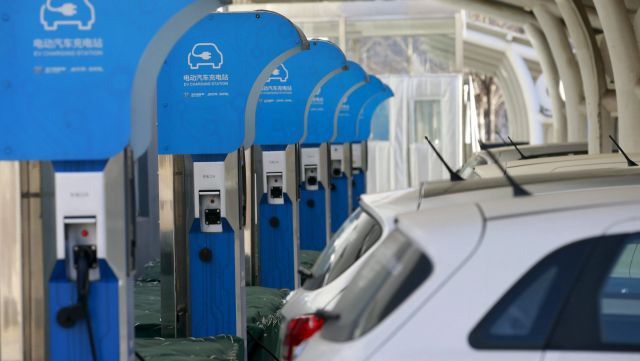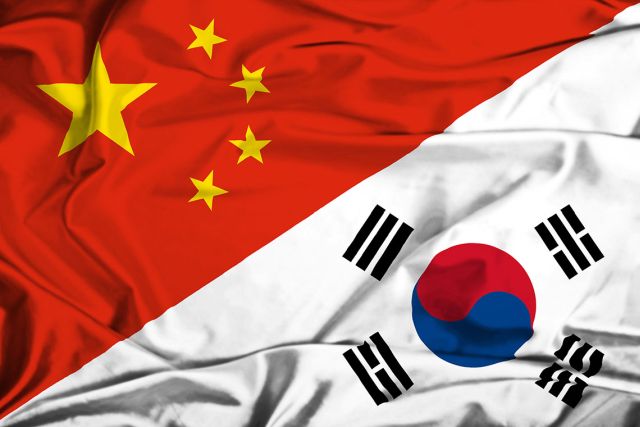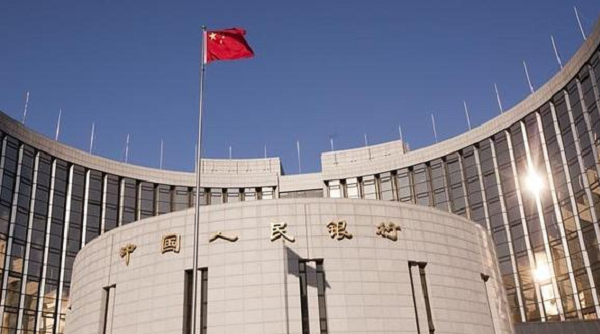
by Editor | May 25, 2021 | World
 Beijing : China on Saturday vowed to take “necessary measures” to safeguard its sovereignty after a US warship entered the waters surrounding Huangyan Island in the South China Sea without Beijing’s permission.
Beijing : China on Saturday vowed to take “necessary measures” to safeguard its sovereignty after a US warship entered the waters surrounding Huangyan Island in the South China Sea without Beijing’s permission.
The USS Hopper, a guided missile destroyer, sailed within 12 nautical miles of the Chinese island late on Wednesday without Chinese government permission, said Foreign Ministry spokesperson Lu Kang at a press briefing.
“We strongly urge the US to rectify its mistake immediately and cease this kind of provocation so as not to harm Sino-US relations and regional peace and stability,” Lu said.
He said the Chinese Navy conducted an identification and warning process to drive the US warship away, Xinhua news agency reported.
The US warship impaired China’s sovereignty and security interests and caused a serious threat to Chinese vessels and personnel working in the area, Lu said, adding that the US side’s behaviour broke basic protocols of international relations.
China claims undisputed sovereignty over Huangyan Island and its adjacent waters, although they are also claimed by the Philippines and Taiwan.
“China respects and safeguards the freedom of navigation and overflight in the South China Sea for all countries in accordance with international law, but resolutely opposes any country’s move to impair China’s sovereignty and security interests in the name of freedom of navigation and overflight,” the spokesperson said.
—IANS

by Editor | May 25, 2021 | World
 Beijing : Beijing has set up more than 112,600 electric vehicle charging points, according to official figures.
Beijing : Beijing has set up more than 112,600 electric vehicle charging points, according to official figures.
The Chinese capital has also launched a smartphone app so that drivers of electric or hybrid cars can locate the nearest charging points, reports Efe news.
The charging stations are an increasingly common sight on the streets of Beijing, although they are frequently occupied by conventional vehicles due to lack of parking spaces.
Beijing also has more and more electric municipal vehicles, from urban transport buses to garbage trucks.
One of the targets in the 13th five-year plan (2016-2020) is to create a national charging point network for a fleet of 5 million electric vehicles.
China is to require that 10 per cent of the vehicles manufacturers sell on the domestic market be electric or hybrid from 2019, a figure that will increase to 12 per cent by 2020. The number is set to be revised in 2021.
The government said in September that it was proposing a ban on the sale of vehicles powered by fossil fuels in future, although it did not specify a date.
In the first 11 months of the year, sales of electric and hybrid cars in China reached 609,000 units, 51.4 per cent more than in the same period in 2016, thanks to government subsidies for the purchase of cars equipped with these propulsion methods.
—IANS

by Editor | May 25, 2021 | Opinions
 By C. Uday Bhaskar,
By C. Uday Bhaskar,
Prime Minister Narendra Modi outlined India’s maritime potential and current profile in a commendable manner at the commissioning ceremony of INS Kalvari, a Scorpene-class diesel-electric submarine, in Mumbai on Thursday (December 14). Modi’s fluency and grasp over the fine-print of the Indian Ocean is indicative of the maritime/naval empathy that South Block has exuded in recent years.
However, the abiding challenge for India’s aspirations in the Indian Ocean region (IOR) and the realisation of the Modi acronym SAGAR (security and growth for all in the region) will depend to a large extent on the Chinese footprint and intent in this domain.
In the last week, Beijing dropped anchor in Hambantota, the Sri Lankan port astride the Indian Ocean, and, earlier this year, China set up its first overseas military base in Djibouti in the Horn of Africa.
Why is China in the IOR? To briefly recall the big picture, as it were, in the maritime domain — in the post-Hiroshima/World War II period — the Indian Ocean had a relatively dormant and below the median strategic relevance in the global context. During the Cold war decades (1945 to 1991), the global maritime focus, shaped as it was by the two superpowers (the US and former the USSR), was on the Atlantic-Pacific ocean combine. This progressively shifted towards East Asia in the post-Cold War years and was symbolised by the phrase “Asia-Pacific” — however incongruous the yoking of an ocean with a continent may be.
Towards the late 1990s, the economic relevance of Asia began to rise, powered by the growth of China and India. Over the next decade, the trade dependency of major economies in East, Southeast and South Asia increased in a visible manner and two phrases were introduced to the regional security lexicon.
Then Chinese President Hu Jintao spoke about the “Malacca dilemma”, a reference to China’s high dependency, hence vulnerability, to hydrocarbon imports from the Persian Gulf. This was the resurrection of the centuries-old Silk Route that became the New Silk Route in the 21st century. This denoted the growing white-shipping trade transit from the Hormuz towards the Malacca and onward to Southeast and East Asia.
The enormity of 9/11 and what followed by way of the US-led war on global terror added to the security dimension and very soon the global maritime focus shifted from the Atlantic-Pacific continuum towards the Pacific-Indian and has now become the extended to what is being called the Indo-Pacific region.
The entry of Chinese naval ships in December 2008 into the IOR as part an anti-piracy effort was an event of deep strategic import and this has been corroborated by more recent events. Chronologically, the two initiatives of Beijing in 2017 that can be deemed “strategic” in relation to the IOR and of considerable relevance to the powers that be in Delhi are: First, the setting up of a Chinese military facility in Djibouti; and Second, the priority accorded to the OBOR (One Belt-One Road) by Chinese President Xi Jinping at his “coronation” speech at the 19th Party Congress.
In dispatching PLA (Peoples Liberation Army) marines to Djibouti (July 12) by amphibious ships, from the southern port of Zhanjiang, China has taken a significant step in enhancing its trans-border military footprint in the IOR. A permanent Chinese military presence in Djibouti marks the first overseas military base for Beijing and the strategic location of Djibouti in proximity of the Red Sea will make China a credible Indian Ocean power with its attendant implications, with a high degree of salience for India.
It is instructive that Beijing embarked upon its Djibouti initiative even as India, the US and Japan were commencing the operational phase of their joint naval exercise, Malabar 2017, on July 14. The image of three flat-tops (carriers) operating in tandem in the Indian Ocean even as a PLA navy amphibious ship en route to Djibouti joined other PLA navy units, including a surveillance ship, may well be the abiding template for the Indian Ocean in the years ahead.
China’s public narrative marks December 2008 as a historical punctuation when Beijing sent three naval ships to join the international anti-piracy effort off the coast of Somalia. For the naval professional, there was a certain symbolism in PLA naval ships transiting the Straits of Malacca. The Chinese military base in Djibouti, when fully established with appropriate assets, will be yet another punctuation — this time in bold font!
The logic from the Chinese perspective is compelling — to break out of the US-shaped military constraints along its Pacific Ocean seaboard, it has to access the Indian Ocean. Overseas bases have been long favoured by major powers and China is not the first extra-regional power to seek a military foothold in the Horn of Africa and adjoining regions.
The US and France are already resident in Djibouti and India has also just established high-level political contact.
The second major development of 2017 with a strategic connotation, relevant to Delhi, is the manner in which President Xi Jinping has framed the OBOR initiative. It may be recalled that Beijing held a major summit meeting to unveil the OBOR in May 2017 and India was the only major nation that chose not to participate. This decision was arrived at by Delhi after due consideration, since Beijing was seen as indifferent to the Indian sensitivity about the disputed territory of POK (Pakistan Occupied Kashmir) through which one strand of the OBOR traverses.
The priority accorded to the OBOR was reflected in the speech of President Xi Jinping at the 19th Party Congress on October 18. If India remains opposed to joining the OBOR and the Xi vision has accorded this macro-connectivity project a high degree of centrality, as part of realising the China Dream, the undercurrents of tension and related political-military dissonance between Delhi and Beijing will be palpable over the next few years.
This OBOR dissonance is a factor that could have potentially discordant strategic consequences — particularly if the US, Japan and perhaps Australia or Singapore come together in a maritime/naval partnership in the extended Indo-Pacific region.
China’s presence and footprint in the IOR is likely to grow over the next five years and Beijing may feel encouraged to assertively display its comprehensive national power and related capability.
The strategic imponderable is how this power index will be utilised. For the greater common good or in defiance of the prevailing status quo? Will Beijing agree to become a stakeholder in Modi’s SAGAR vision?
(C. Uday Bhaskar is Director, Society for Policy Studies. The views expressed are personal. The article is in special arrangement with South Asia Monitor)
—IANS

by Editor | May 25, 2021 | World
 Seoul : South Korea and China on Tuesday said they wanted to normalise and improve bilateral ties despite disagreement over a controversial US anti-missile system installed in Seoul which is criticised by Beijing.
Seoul : South Korea and China on Tuesday said they wanted to normalise and improve bilateral ties despite disagreement over a controversial US anti-missile system installed in Seoul which is criticised by Beijing.
“The two sides have emphasised the great importance of South Korea-China link and have decided to promote further development of their strategic relationship and cooperation,” a joint statement released by the Seoul Foreign Ministry said.
It also highlighted that both countries share the vision that strengthening exchanges and cooperation serves common interests and the countries have thus agreed to reorient them quickly to their normal course in all areas, reports Efe news.
This is the greatest gesture of rapprochement between the two countries since China, Seoul’s main trading partner, started a covert boycott of South Korean interests in retaliation for the installation of the Terminal High Altitude Area Defence (THAAD) missile system.
The boycott has hit South Korean companies, some of which were even forced to stop operating in China, and has adversely affected diplomatic ties despite the strong rapprochement shown by the two countries in the last five years.
The joint statement is the result of a meeting between the South Korean National Security Council vice chief Nam Gwan-pyo and Chinese Assistant Foreign Minister Kong Xuan You.
As a token of this rapprochement the presidents of both countries, Moon Jae-in and Xi Jinping, will hold a bilateral meeting on the sidelines of the Asia-Pacific Economic Cooperation forum to be held from November 12 to 14 in Vietnam.
However, both countries have reiterated and defended their respective positions in relation to the controversial THAAD, the joint statement said.
Seoul and Washington argue that the shield only aims to protect against North Korean missiles but according to Beijing the THAAD radars can be used to spy on its military bases and has insisted on its withdrawal.
—IANS

by Editor | May 25, 2021 | World
 Beijing (IANS) China’s central bank on Monday pumped 25 billion yuan ($3 billion) into the market to preserve liquidity.
Beijing (IANS) China’s central bank on Monday pumped 25 billion yuan ($3 billion) into the market to preserve liquidity.
The People’s Bank of China (PBOC) put 45 billion yuan into seven-day reverse repo, a process by which central banks purchase securities from banks with an agreement to sell them back in the future, Xinhua news agency reported.
The reverse repo was priced to yield 2.25 percent, according to a PBOC statement.
Reverse repo worth 20 billion yuan matures on Monday, so the central bank has effectively injected 25 billion yuan into the market.
On Monday’s interbank market, the benchmark overnight Shanghai Interbank Offered Rate (Shibor) was up by 0.3 basis point to 2.005 percent.
The Shibor for seven-day loans also increased 0.3 basis point to 2.327 percent and for three-month loans rose 0.4 basis point to 2.9075 percent.

 Beijing : China on Saturday vowed to take “necessary measures” to safeguard its sovereignty after a US warship entered the waters surrounding Huangyan Island in the South China Sea without Beijing’s permission.
Beijing : China on Saturday vowed to take “necessary measures” to safeguard its sovereignty after a US warship entered the waters surrounding Huangyan Island in the South China Sea without Beijing’s permission.



